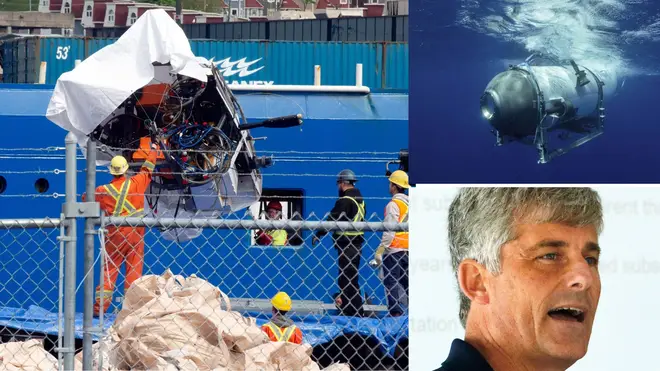
Clive Bull 1am - 4am
17 July 2023, 11:27 | Updated: 17 July 2023, 11:39

OceanGate CEO Stockton Rush wanted actors from the 1997 blockbuster Titanic to accompany guests on board trips down to see the shipwreck.
In an 2017 interview, Mr Rush said he was “working on having some cast members of Titanic on their first mission to the wreck site.”
He told Fast Company magazine in April 2017 that the descent would be a “life-changing experience” for those on board.
“We’ll be profitable with the Titanic trips,” he said.
“The Titanic is where we go from startup to ongoing business. It really is a life-changing experience and there aren’t a lot of things like that.”
“Rather than spend $65,000 to climb Mt. Everest, maybe die, and spend a month living in a miserable base camp, you can change your life in a week.”

Mr Rush died on a descent to the Titanic’s wreck alongside billionaire Hamish Harding, Shahzada Dawood and his 19-year-old son Suleman, and French explorer and sub expert Paul-Henri Nargeolet.
Less than a year after the interview, OceanGate’s then director of marine operations, David Lochridge, detailed a series of design flaws with the Titan sub.
He noted that the vessel “deviated from standard design parameters” and warned of glue coming away from seams of ballast bags, issues with the exostructure and electrical pods being at risk of corrosion from seawater.
Read more: Russia scraps vital deal allowing Ukraine to export grain after Crimean bridge attack

Mr Lochridge later aired his concerns via email and warned Mr Rush could kill “himself and others.”
A series of engineering experts have also highlighted cost-cutting and risky design choices, including the shape of the hull, the materials used in its construction, and the lack of certification.
One expert raised concerns about the hull’s ‘pill-like’ shape - rather than a more standard sphere. The unusual shape of the hull may have caused pressure to distribute disproportionately, which may have caused it to 'collapse like a soda can’, the expert told the New York Times.
The hull was made from carbon fibre, rather than titanium - in another supposed cost-cutting move. A forensic metallurgist told the paper that carbon fibre would have been subject to compression under the water, making an implosion more likely.
On the decision not to have the sub properly certified, Mr Rush said: "You are remembered for the rules you break, and I’ve broken some rules to make this. The carbon fibre and titanium — there’s a rule you don’t do that. Well, I did."